Wall colour combinations are excellent in adding character, flair, and personality to any room. However, selecting the right colour combination can be somewhat daunting, mainly because there are many potential choices. It is crucial to avoid falling into the trap of simply selecting one of the first wall colour combination ideas you come across.

If you’re looking to create a distinctive and warming atmosphere in your home, consider using contrasting colours to make a bold statement with two elements of interior design – walls and floors. The main idea is not to overlook this detail in your house. Modern homeowners tend to forget that walls are equally important as other home decoration elements when creating a pleasant and comfortable atmosphere.
How Do Wall Colour Combinations Help in Uplifting the Home’s Interiors?
The walls of your home can make or break a room. They’re the backdrop that sets the tone and feel of your space. Wall colour is probably your most important decision when decorating a room. It’s so vital that it’s worth taking your time to think through all your options.

There are so many things to consider when choosing a wall colour — from the size and shape of your space to whether you want it to be a feature wall or not — but they all boil down to three basic questions:
1) What is your mood?
2) What do you like?
3) What will look best with all of your other decor elements?
15 Dazzling Wall Colour Combinations for Your Home’s Interiors
The room wall colour combination can make a massive difference to the overall feel of a room. Whether you want something bold and dramatic, calming and soothing, or neutral and classic, there are plenty of options.
If you’re looking for inspiration on how to decorate your living room with interior design ideas, here are 15 dazzling wall colour combinations for the home’s interior:
1. Dark Blue and White
This classic combination has been popular for a long time and continues to be so today. It is suitable for almost any room in the house, from bedrooms to kitchens. The blue tone is soothing and relaxing, while white provides lightness and brightness. This combination works well with furniture of different styles and textures, from traditional to contemporary.

This combination is one of our favourites because it looks classic and elegant – especially when paired with wooden furniture and lots of natural light from windows and skylights. The dark blue will make the room feel more spacious, as dark colours do.
2. Light Green and White
The combination of light green walls with white furniture creates an elegant atmosphere in any room of your home – whether it’s a living room, dining area, bathroom, or kitchen. It’s perfect for those who want their interior wall colour combination to exude sophistication without a pretentious or formal look, which white walls often do.

The light green shade is soothing, so it’s the perfect colour for a bedroom or living room. The combination works incredibly well if you plan to use white as your primary wall colour.
3. Light Blue and Dark Brown
Light blue walls are great for small spaces, especially bedrooms. They create an impression of spaciousness and make the room look larger than it is. Dark brown wood or wood-plank flooring adds warmth to this colour scheme, complementing traditional and modern furniture styles equally well.

A combination of light blue and dark brown is an excellent choice for the bedroom because it will help to create a relaxing atmosphere. The light blue gives the room a relaxed vibe, while the dark brown adds warmth to the room. This combination is perfect for those who want something different in their interior design.
4. Dark Grey and White
Dark grey walls can be intimidating if used on their own, but with just enough white accents in your room, they can be a perfect wall colour combination for the hall. They can create a sophisticated atmosphere. You can also try using dark wood furniture and rugs to complement this home wall colour combination even more!

This combination is a classic, but it’s also very versatile. You can make a dark grey background highlighting the white shades in your decor or vice versa. The result will be equally beautiful! This sophisticated combination is ideal for a bedroom or living room that needs a little extra drama. The dark grey adds depth, while the white keeps things from getting too heavy.
5. Silver and Blue
This room colour combination is perfect if you’re looking for something more neutral. It’s also very versatile, so you can apply it to every room in your house without feeling too repetitive.

Silver is a shade that works well for various interiors, but it’s perfect for making rooms look more spacious. If you want to incorporate this colour into your home’s interior design, try pairing it with a complementary hue like blue. This combination creates an elegant, modern look perfect for living spaces.
6. Yellow and Black
These two colours are often used in interior design as they work together well. However, you don’t need to use them side by side in your home if you’re worried about how they’ll look together! Instead, try using them separately on different pieces of furniture or accessories that sit within proximity of one another – such as cushions on sofas or chairs or decorative items like vases or candle holders. The contrast between the two-colour combination makes the interiors seem more spacious than it is.

Yellow is a great colour to use in small spaces. It’s bright and vibrant, which makes it perfect for adding character to a room. Yellow works particularly well with black as they are both intense colours that work well together. Use yellow on the walls, furniture or accessories –remember to keep it toned down. Otherwise, it can be overwhelming.
7. Red and Black
Red is a colour that is often associated with romance. This shade of red is perfect for a bedroom, as it can create a warm atmosphere in the room. The black furniture and accessories will complement the red wall in the room.
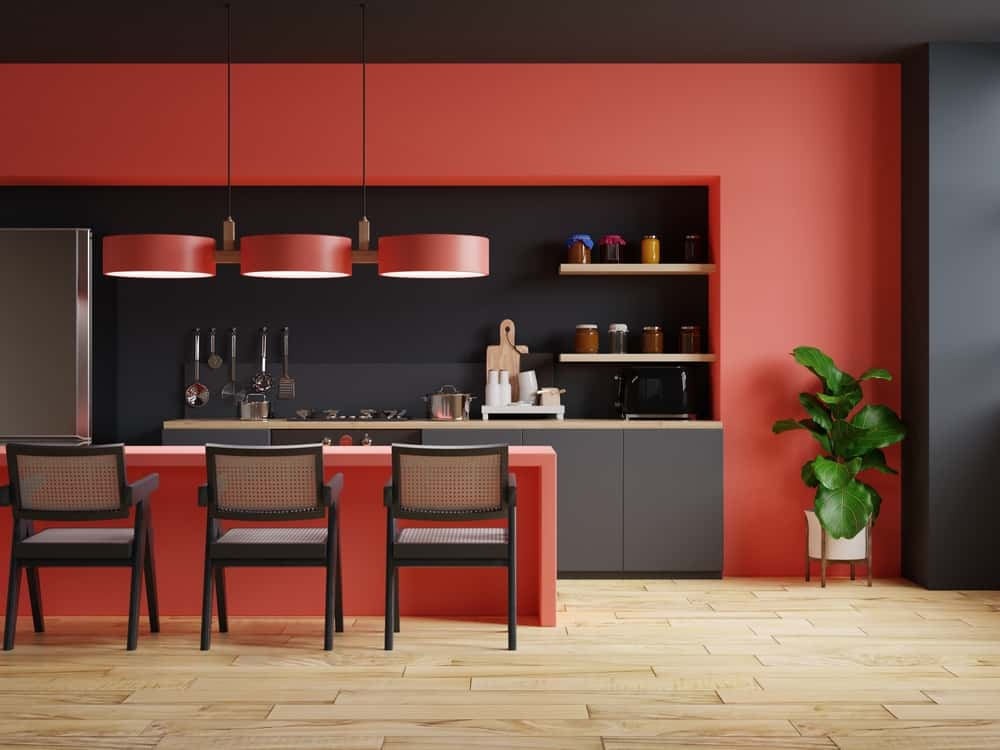 Red and black are a classic combination that is often used in interior design. The contrast between these two colours is so striking that it creates an energetic and exciting room. This colour palette can be used in various ways to create a dramatic effect. For example, you can use a combination of red walls and black furniture or vice versa. In this case, you should use bright red or dark red paint for the walls and black table with white details or vice versa.
Red and black are a classic combination that is often used in interior design. The contrast between these two colours is so striking that it creates an energetic and exciting room. This colour palette can be used in various ways to create a dramatic effect. For example, you can use a combination of red walls and black furniture or vice versa. In this case, you should use bright red or dark red paint for the walls and black table with white details or vice versa.
8. Orange and Green
Orange is a colour that can be used in many different ways to create a bold space. It’s a colour that evokes warmth, energy and passion. Green is the opposite of orange. It’s calm and serene. Combined, they make a beautiful contrast that will make any room feel fresh and inviting.
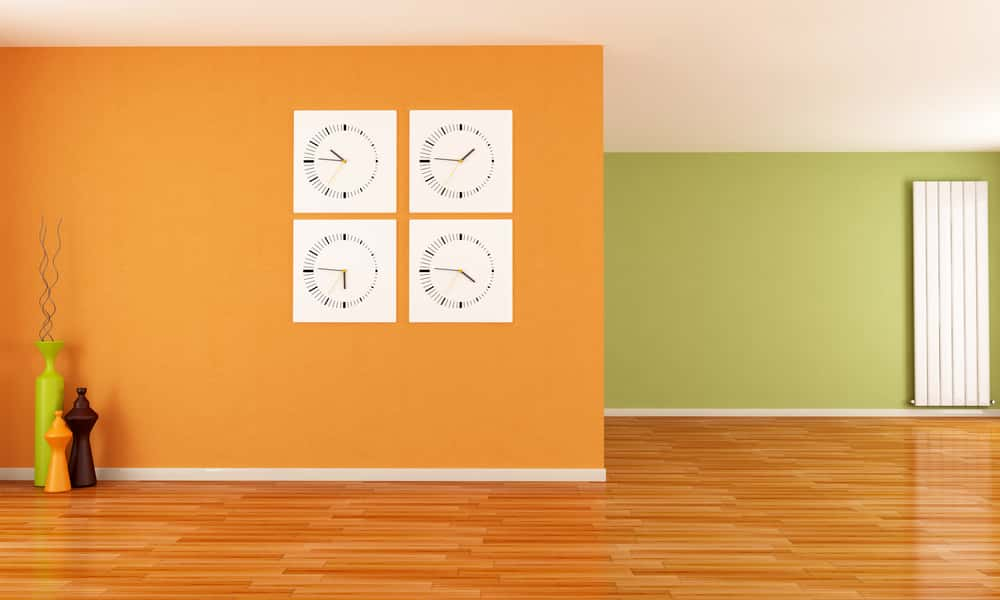
In this colour combination, orange is used as the base colour for the room and green is used for accents. The orange tone can be either light or dark, but it must be warm to complement the cool tones of green.
9. Blue and Grey
Blue is calming and relaxing, while grey has a neutral look that blends well with most other colours. This combination creates a serene ambience that can be used in modern and traditional settings. It’s also great for small spaces as it makes them appear larger than they are.
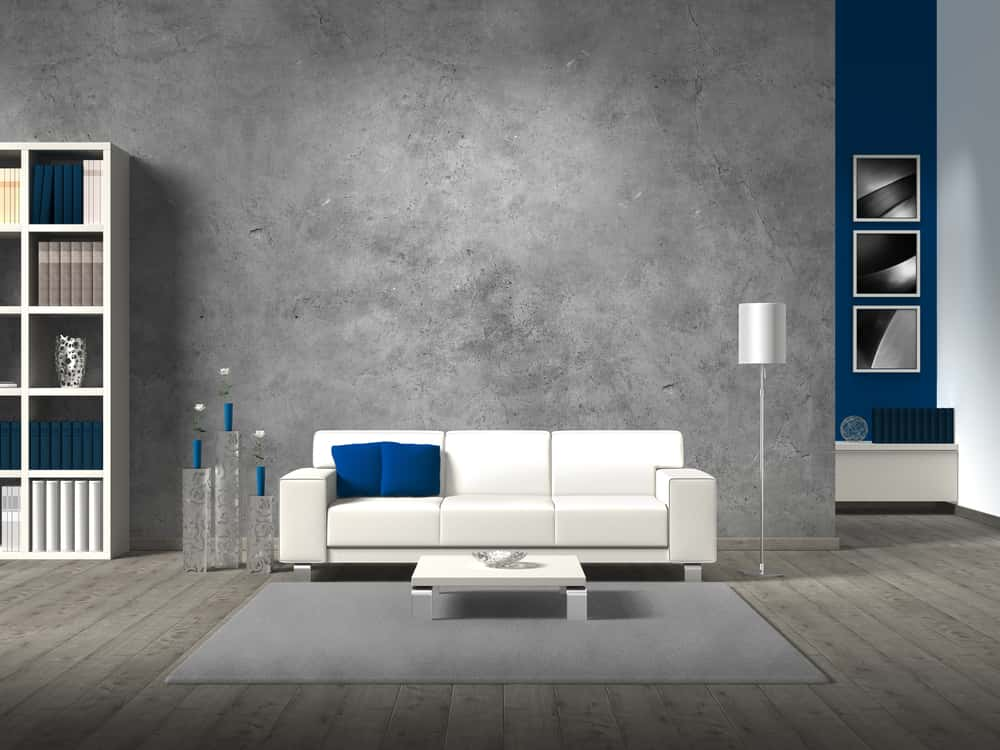
The subtle contrast between blue and grey is a classic combination that can be used in many ways. You can start with the light blue wall colour and then use grey in decorative items such as lamps, furniture and rugs. Or you could use dark blue paint on the walls and lighter shades of grey for the accessories.
10. Pink and Purple
These two colours go well together because they’re both warm shades, which means they complement each other well without clashing too much. If you’re thinking about painting your walls pink and purple, try pairing them with white trim or furniture for a clean look.

Pink and purple are popular home colour combinations that can be used in various ways, from accent walls to entire rooms. The two colours complement each other beautifully, creating an elegant and sophisticated feel that’s perfect for any space. Add some glamour to your living room with these two bold colours.
11. Peachy Pink and White
This combination is perfect for small spaces like bathrooms or bedrooms where pink shades are used extensively to add a feminine touch to them. Pink and white is a classic combination that never goes out of style. This pairing works well in the bedroom, living room or kitchen because it gives your space a clean, crisp look.

It’s not just a colour combination for a house but also one of the most popular interior design trends. This is because it creates a light and airy ambience.
12. Teal and Gold
This colour combination is perfect for creating an inviting atmosphere in any room — especially if you’re looking for something warm and inviting for your living room or kitchen area! Teal is one of the most relaxing colours, so this combination might be just what you need if you’re trying to create a comfortable atmosphere in your home.

Teal is a great colour for creating a relaxing space, which is why it’s famous for bedrooms. Adding gold accents to this calming hue gives the room an elegant look that can be used in any home space. A gold lampshade or pendant light can be added above the bed, while simple gold picture frames can be hung on the walls.
13. Turquoise and Purple
These two colours complement each other perfectly! If you combine them in the same room, make sure they’re not too close together – one should be dominant over the other, so they don’t blend thoroughly. An excellent way to do this is by using different shades of each colour.

This is a bold combination that will give your home a modern look. The turquoise wall colour will create a calming effect, while the purple wall will add drama. These colours are also great for small spaces since they can make a room appear bigger.
14. Black and White
Black is among the most popular wall colour choices, especially in kitchens and bathrooms. But it doesn’t have to be plain black! It’s classic and goes with nearly any other hall colour combination. Try adding white accents like light fixtures or cabinets to brighten things up and add contrast.
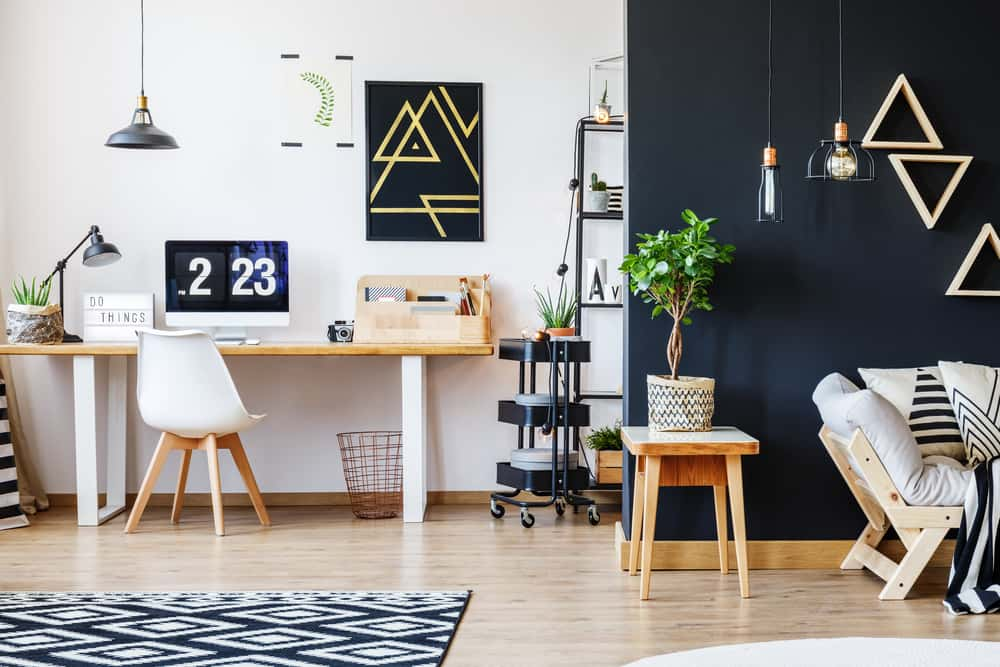
If you’re looking for a classic look, black and white may be your best bet. Since these colours don’t distract from one another, they allow each other to stand out more prominently in the room’s interior design scheme, making them ideal for large spaces such as an office or living room where you want to create visual interest without cluttering up the space with too many colours and patterns all at once.
15. Grey & Pink
Grey is another popular choice for interior walls because its neutral tone works well with almost any other hall wall colour combination (except red).

The combination of grey and pink is classic, but this time it’s done in a contemporary way. The pink walls are not as bright as they used to be, and the grey is a little darker than usual, creating an elegant atmosphere.
Wrapping Up
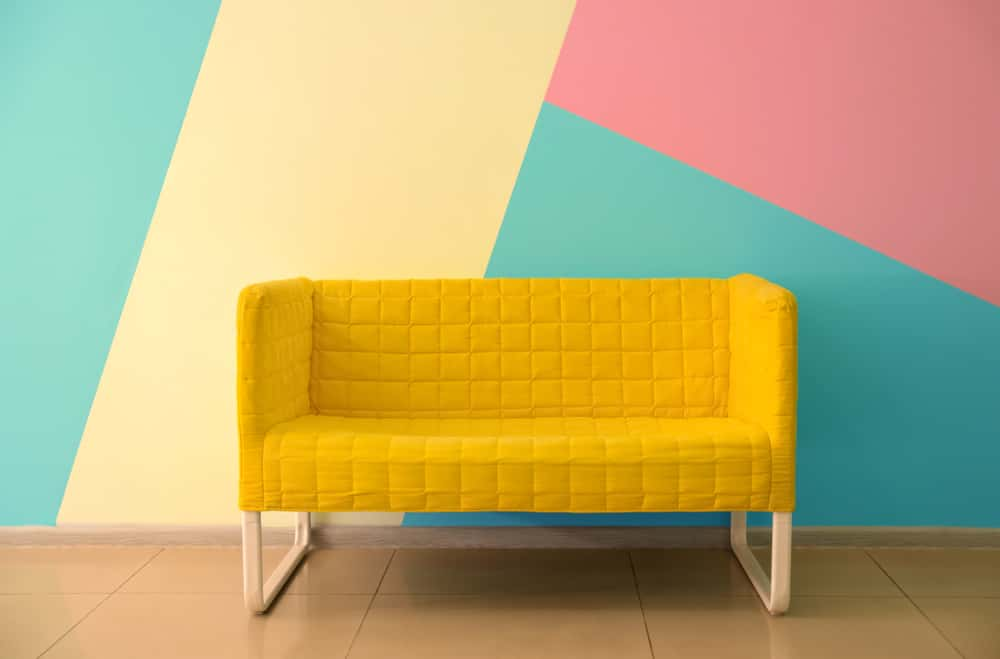
Remember that your flooring, furniture and accessories can immensely change the effect of colours. It will also help you to determine which shades will complement similar tones or hues. While a well-chosen colour scheme can uplift the space and make it feel warmer, reduced and homogeneous schemes can result in smaller, more confined or monotonous spaces.
To bring out some personality in your space, you must choose a colour scheme that complements your home precisely, or if you need some help, get in touch with our team of consultants at HomeLane.
FAQs
1. Which colour combination is best for the wall?
The most important thing to remember when choosing a wall colour is that it should complement your home’s furniture, accessories, and exterior. The best way to select a wall colour is by looking at all available options and deciding which one works best with your décor and lifestyle.
Here are a few tips on how to do it:
- Consider the lighting in your home
- Choose a neutral base colour
- Choose two accent colours
2. Which wall colour is best for the bedroom?
A bedroom is often where people spend most of their time at home, so it’s essential to feel comfortable and welcoming. Calming wall colours can help achieve this effect by creating an inviting atmosphere.
If you’re looking for relaxing bedroom colours, try combining soft pastel shades like blue or lilac with creamy whites and neutrals. This combination creates a balanced look that’s subtle enough not to overpower other elements in the room but bold enough to develop a sense of depth and cosiness when used together.
3. What colours go well together in a room?
The most popular colour combinations are those which are easy to live with. They work well for the home’s interior and reflect your personality. However, if you want something more daring or unusual, try to find inspiration from your favourite artists or designers.
You can use different colour combinations to achieve different effects in your home. For example:
- If you want to create a relaxing atmosphere, try using colours like soft blue-green or relaxing lavender shades.
- If you want to create an energising atmosphere, try using colours like reds, oranges or dark greens and yellows.
Popular Services
Modular Kitchen Designs | Home Interior Designs | Wardrobe Designs | Living Room Designs | Bathroom Designs | Space Saving Furniture | Home Office Designs | Pooja Room designs | Foyer Interior Design | Kids Bedroom Design | Interior Lighting Design |False Ceiling | Home Wallpaper | Furniture Design
Popular Locations
Modular Kitchen In Ahmedabad | Modular Kitchen In Mumbai | Wardrobe Designs In Chennai | Wardrobe Designs In Delhi| Interior Design In Mumbai | Interior Design In Delhi
Popular Blogs
Party Ideas for Holi | Assam Type House Design | Pop Designs for Bedroom | Window Grill Design | Plinth Area | MDF Vs Particle Board | Wall Colour Combinations | Vastu Shastra Colors For Living Room | Classical Interior Design | Wardrobe Dimensions | Parapet Design | How To Prevent Dust In Room | Types Of Kitchen | Wall Panel Design | Small Modular Kitchen | Pooja Room Design| HDF Wood | French Door Design | Bedroom Wardrobe | Solid Wood Vs Engineered Wood | Athangudi Tiles




